The Ball Run....or the Bull Run?
Wednesday, April 27, 2022
Back in late 2011, with Spain mired in nationwide economic malaise, a town north of Madrid learned it didn't have the funds to hold a key part of its annual festival: the bull run.
 Rather than scrap the event entirely, the town's mayor, Javier de Los Nietos, hit upon another, cost-effective solution. Great ideas often come from hard times and this was one of them. Rather than scrap the event entirely, the town's mayor, Javier de Los Nietos, hit upon another, cost-effective solution. Great ideas often come from hard times and this was one of them.
Residents of the town of Mataelpino replaced the bulls that charged after revelers with a 3-meter wide, 200 kg polystyrene ball, creating the 'Boloencierro', a combination of the Spanish words "bolo," or ball, and "encierro," or bull run. It somewhat reminds me of the famous boulder scene from Indiana Jones, as he runs out of the cave in Raiders of the Lost Ark
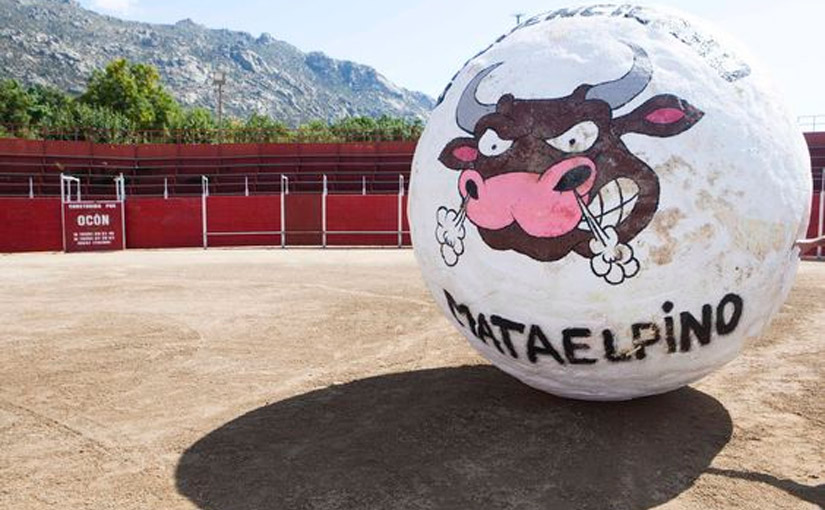
The Boloencierro took advantage of the winding, up-and-down street layout of the town of 1,700 people, which is about 3,700 feet above sea level in the hills outside the Spanish capital.
The town hosted its seventh iteration of the boloencierro this year (the ball broke in half last year), and previous years have already given the town a boost in tourism. The event has won Mataelpino publicity from as far afield as China and Japan. In Spain alone, four other towns will host versions of Mataelpino's boloencierro this year.
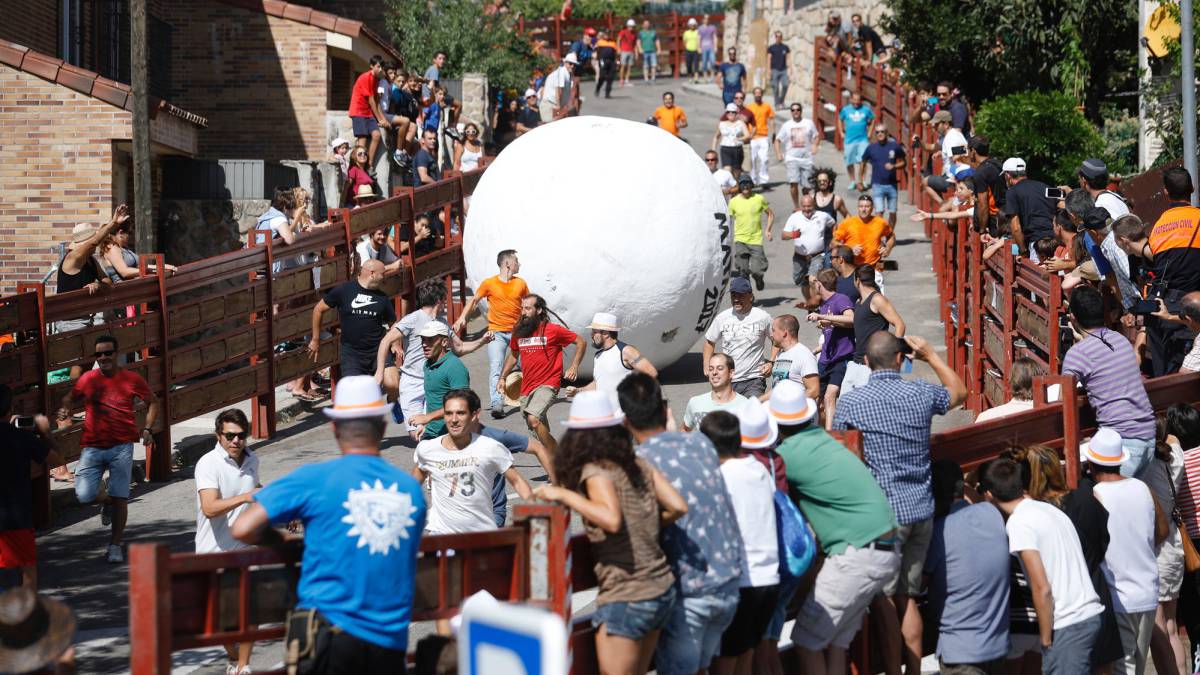
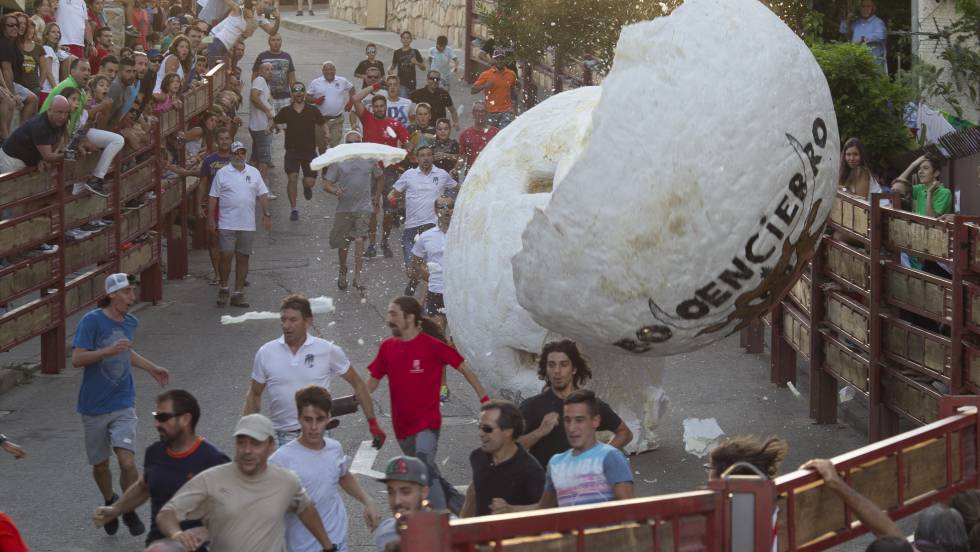
While it doesn't have the same dangers as running with actual bulls, injuries can still happen during the boloencierro. In addition to cuts and scrapes from falls, those who don't dodge the bolo can be knocked down and concussed.
"You feel very small, and you have to keep your wits about you," de los Nietos said "because if the boulder cracks you on the back, it can push you against the walls or onto the ground."
Animal-rights groups are among those who welcome the new take on an old tradition. "Each year, people are gored or trampled while they run with the bulls, Boloencierro is fun, for all the family and a great alternative for the growing number of people who oppose bullfighting and bull runs," said the group, which also offered to cover the costs for other towns in Spain and Portugal that replaced the traditional bull run with a ball run.
The prevalence of bullfights has declined in recent years, particularly in Spain, where the event has attracted public protests as well as political and financial pressure from municipal governments.
Despite Boloencierroes being hailed as an alternative to regular encierros, to Mayor De Los Nietos, this version will be no substitute for the real thing. "It’s not something that divides bullfighting aficionados from opponents: in fact, it brings them both together; everybody enjoys the party,"
What do you think?....
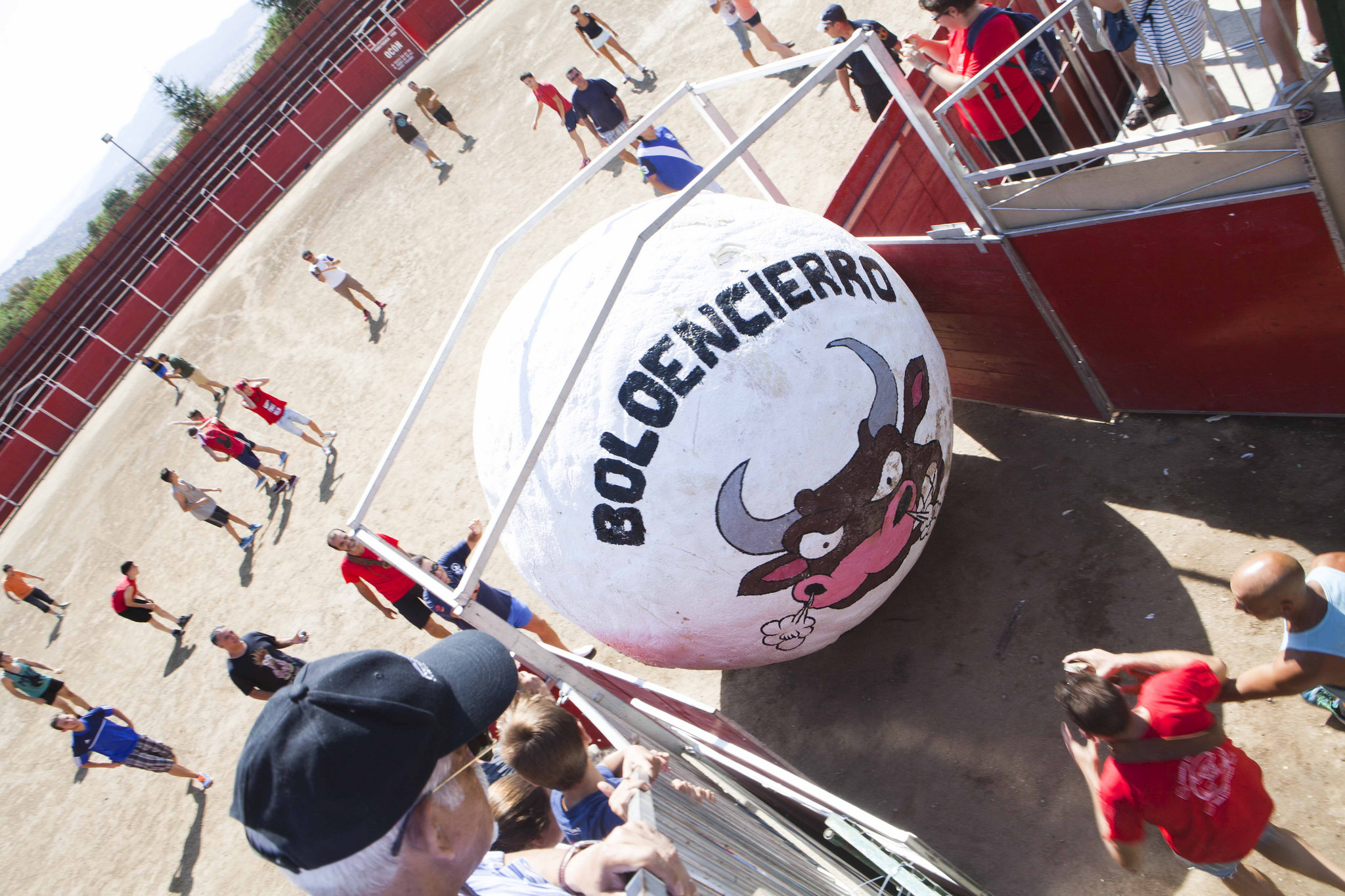
 2
Like
Published at 9:12 PM Comments (1)
2
Like
Published at 9:12 PM Comments (1)
The Spanish professors who "invented" the Gregorian calendar and forever changed the way of measuring time
Tuesday, April 19, 2022
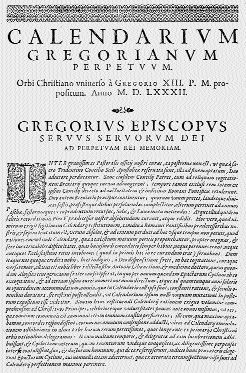 The history of humanity has thousands of ins and outs that have changed our way of living. The year we find ourselves in, for example, is a number that we accept and celebrate every January 1 to welcome another 365 days or 366 every four periods. The history of humanity has thousands of ins and outs that have changed our way of living. The year we find ourselves in, for example, is a number that we accept and celebrate every January 1 to welcome another 365 days or 366 every four periods.
Thus, since last January 1, the Western world entered the year 2022. This was taken naturally by the majority of the population, although not all places on the planet entered the same way when they circled the sun that day.
The Chinese calendar, for example, is currently in the year 4719 where, according to the most extensive studies, its origin would be 2679 before ours, the Gregorian calendar. Its establishment meant such an important change in the life of a large part of the planet that it regulates today the year in which we live.
About 500 years ago the months were not structured as they are today. The world was regulated by the Roman calendar, which was the first system to divide time in Ancient Rome, whose legend states that it was created by one of the two founders of the city, Romulus. This was based on months of 29 days, 12 hours and 44 minutes that, according to the moon, could amount to 30 days.
But this almanac underwent various changes such as the one introduced by Julius Caesar, influenced by Sosigenes of Alexandria who decided to establish modifications to this system. Thus, a new calendar, called Julian in honour of the president, was implemented in the year 46 BC and established years of 365 days where every 4 years the leap figure would appear.
But the most important change to the way of structuring the days and months until today would occur in the sixteenth century. Pope Gregory XIII decided to establish what is today our almanac and January 1 was considered the beginning of the year, something ingrained in society.
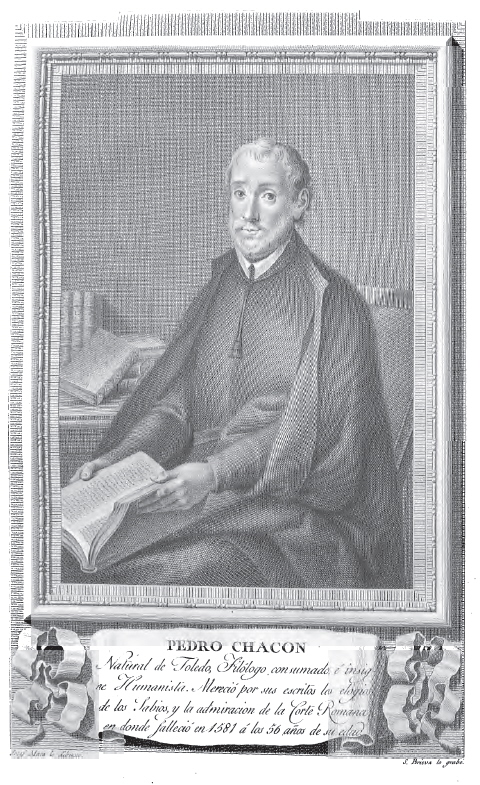 Although the initiative was approved by the pontiff, the origin of this calendar has its home here in Spain. Spain was in charge of creating the day manager used by most of the planet thanks to research carried out by the University of Salamanca that would revolutionise calendars forever. Although the initiative was approved by the pontiff, the origin of this calendar has its home here in Spain. Spain was in charge of creating the day manager used by most of the planet thanks to research carried out by the University of Salamanca that would revolutionise calendars forever.
The study was carried out by a commission of professors from the institution appointed by the Pope and directed by Pedro Chacón, one of the most important mathematicians in Spain during that century. He, unfortunately, died in 1581 without being able to see the adoption of the calendar.
The page specialising in historical issues on the Twitter social network "theespanishlegacy" exposes how Pope Gregory XIII turned to the teachers of the Spanish university because this was "one of the main centres of knowledge in the world." In this sense, it should be noted that it only took three years to prepare the investigation, a milestone for the time.
After the publication, it was Philip II himself who pressured the highest pontiff to establish the new calendar, leaving behind the Julian calendar, which had been lagging behind ten days since its creation. Thus, after various deliberations, the pope accepted the Spanish proposal and research and it was adopted by pioneering countries Spain, Italy and France.
 1
Like
Published at 10:16 AM Comments (0)
1
Like
Published at 10:16 AM Comments (0)
The Scallop Shell
Friday, April 15, 2022
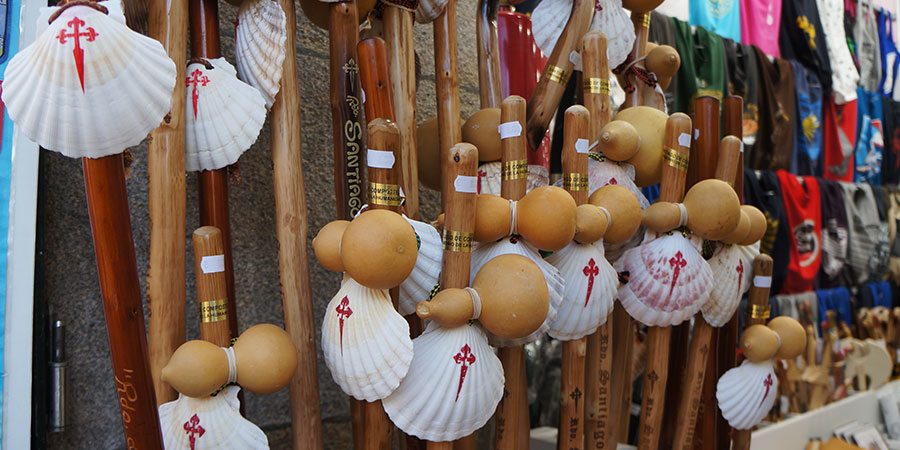
The scallop shell is one of the most iconic symbols of the Camino de Santiago and today it is used, along with the yellow arrow, to guide pilgrims heading to Santiago de Compostela along its many different routes. Painted on trees, sidewalks, tiles, etc… the scallop shell (or ‘vieira’ in Galician and Spanish) will help travellers find their way.
There are many stories, legends and myths trying to explain the ancient link between the scallop shell and the Saint James Way. It is no coincidence that in French the scallop is called Coquille Saint Jacques, while in German scallops are called ‘Jakobsmuscheln’ (James mussels).
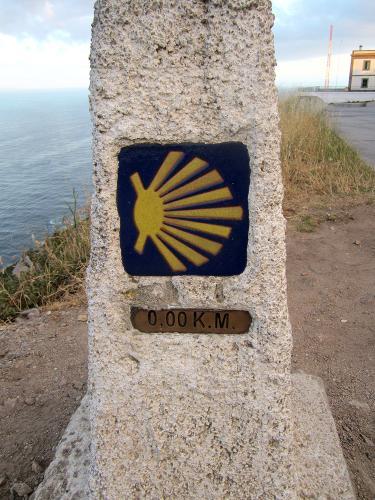 The scallop shell is said to be a metaphor, its lines representing the different routes pilgrims travel from all over the world, all walking trails leading to one point: the tomb of Saint James in Santiago de Compostela. However, it is open to interpretation. Which side points to Santiago? In some regions, the scallop’s longest line is considered the one pointing towards Santiago. This is the case in Asturias, for example, if you are walking the Camino Primitivo or the Camino del Norte, and some parts of the Camino Portugues. The scallop shell is said to be a metaphor, its lines representing the different routes pilgrims travel from all over the world, all walking trails leading to one point: the tomb of Saint James in Santiago de Compostela. However, it is open to interpretation. Which side points to Santiago? In some regions, the scallop’s longest line is considered the one pointing towards Santiago. This is the case in Asturias, for example, if you are walking the Camino Primitivo or the Camino del Norte, and some parts of the Camino Portugues.
But don’t let this fact confuse you, take the scallop shell as a symbol of the Camino, reassuring you are on the right path! The scallops are most of the time placed next to a yellow arrow so always follow the arrows (no confusion here!), as they are the most accurate ‘road signs’ to follow.
Medieval pilgrims often wore a scallop shell attached to their cloaks or hats during their journey to Santiago. More than being just a symbol or a pilgrim badge, the scallop shells also had a practical purpose: they were a handy and light replacement for a bowl so the pilgrims could use them to hold their food and drink on their long journey. Pilgrims would also be given food at churches and other establishments, and a scallop shell scoop was the measure for the food they would be donated.
Since the scallop is native to the coast of Galicia, the shell also became a memento, a physical proof of having completed the pilgrimage to Santiago (and quite often walked to or via Fisterra, on the Costa da Morte). The shells could be picked up at the very end of the journey in Fisterra but also became a popular souvenir and source of business for the shops near the Cathedral in Santiago and other establishments along the way.
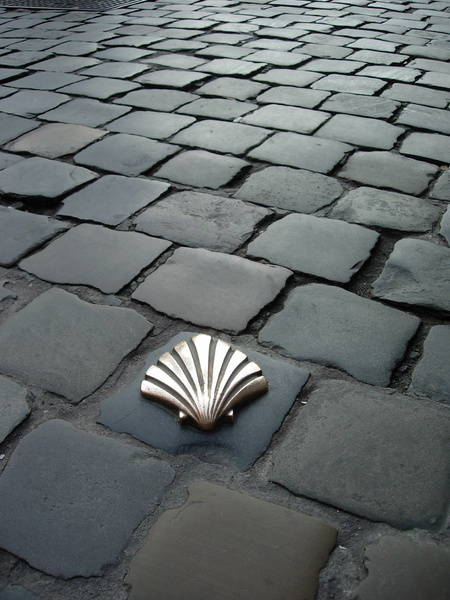 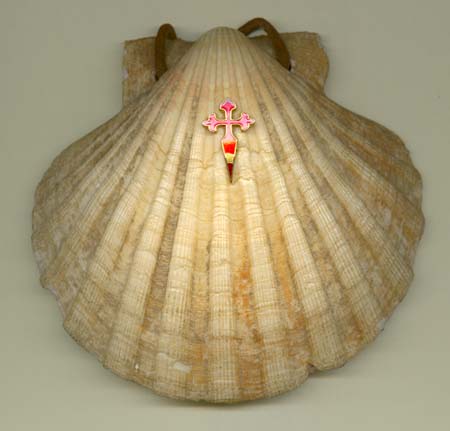
There are many legends trying to source this old association of Saint James with the scallop shell: one of those legends says the apostle once rescued a knight covered in scallop shells, while a similar version of the same story explains that a knight’s horse fell into the water and emerged covered in scallop shells, while the remains of Saint James were being taken from Jerusalem to Galicia.
There are also many stories about the scallop shell believed to have a much earlier origin, dating to pre-Christian times. It is understood the Camino de Santiago had also become a kind of fertility pilgrimage, taken by couples in need of help to have children. This could be related to the fact that the scallop shell might have been a pagan symbol of fertility, originally.
The shape of the scallop shell also resembles the setting sun, which would have been an important daily event, full of symbolism in pre-Christian societies. It is probably not just a mere coincidence that the Saint James Way is a journey to the West, finishing at the ‘end of the world’ (the name given to Fisterra – Finis Terrae) and the setting sun.
 2
Like
Published at 9:50 PM Comments (0)
2
Like
Published at 9:50 PM Comments (0)
Lidl's Best Wines for under €5
Friday, April 8, 2022
LIDL is a supermarket chain that stands out above all for its low prices and sometimes for products that are normally more expensive, such as wine. For less than 5 euros, you can buy excellent wines with which you will be able to show off at a dinner with family or friends alike. LIDL offers a selection of very good quality wines and, what is better, at a more than affordable price. Here are some of them, including one that stands above the rest.

Coto de Ibedo (DO Ribeiro)
This white wine DO Ribeiro harvest of the year 2020 is the one that is qualified by experienced critics as one of the best in Spain. Its youth can be easily appreciated, as it has a pale yellow color with greenish reflections. It is a pleasant and very balanced wine: the fruity notes of the three types of grapes used in its production and the typical acidity of the DO company's products stand out. The bottle only costs 3.99 euros.
Tramuz (DO Ribera del Duero)
For just 4.99 euros, you can enjoy a delicious red wine aged for three months in barrels. Its colour is intense red and has purple reflections. In a few words, it is a rounded and very fruity wine. Pairing this wine with legumes and stews is highly recommended.
Gamellón Joven 2020 (PDO Jumilla)
Another red wine, but this time cheaper: it is only 2.49 euros. The most noteworthy of this is its freshness and its fruity aroma, obtained from the Monastrell and Syrah grapes used in its preparation. It is ideal to accompany with pasta and rice.
La Bien Pintá (DO Rueda)
It costs 3.99 euros, so it is a real bargain. It is a really good white wine, with a bright yellowish colour and medium aromatic intensity. It has hints of tropical fruit, and aromatic herbs... making it a rather exotic wine. It is perfect to accompany different dishes: red meats, pasta, rice dishes, pâté, shellfish, fish...
Fincas del Lebrel 2020 (DOCa Rioja)
It is a powerful cherry red Tempranillo. Above all, you will enjoy its freshness and its intense flavour. It is only worth 3.49 euros, which makes it a bargain that is not easily found.
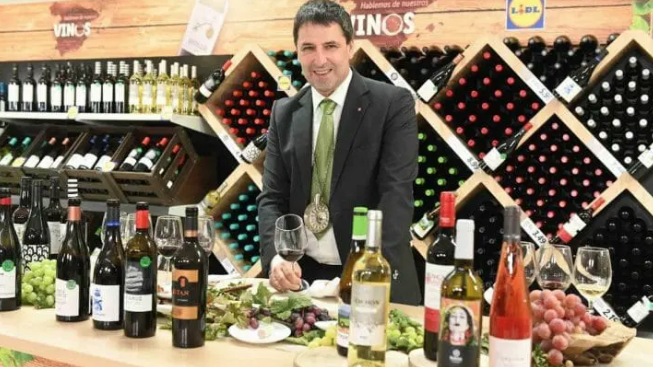
Don’t take my word for it. One of the most prestigious winemakers in Spain, Jon Andoni Rementeria, who is also the 2018 Spanish Sommelier Champion (among other awards), assures that, for less than 5 euros, you can buy great wines at LIDL. Rementeria is more than an authorised voice in the wine world, as he has tasted and continues to taste excellent quality wines that are not sold at such modest prices and recommends each and every one of the wines on this list.
 1
Like
Published at 1:49 PM Comments (2)
1
Like
Published at 1:49 PM Comments (2)
Spam post or Abuse? Please let us know
|
|